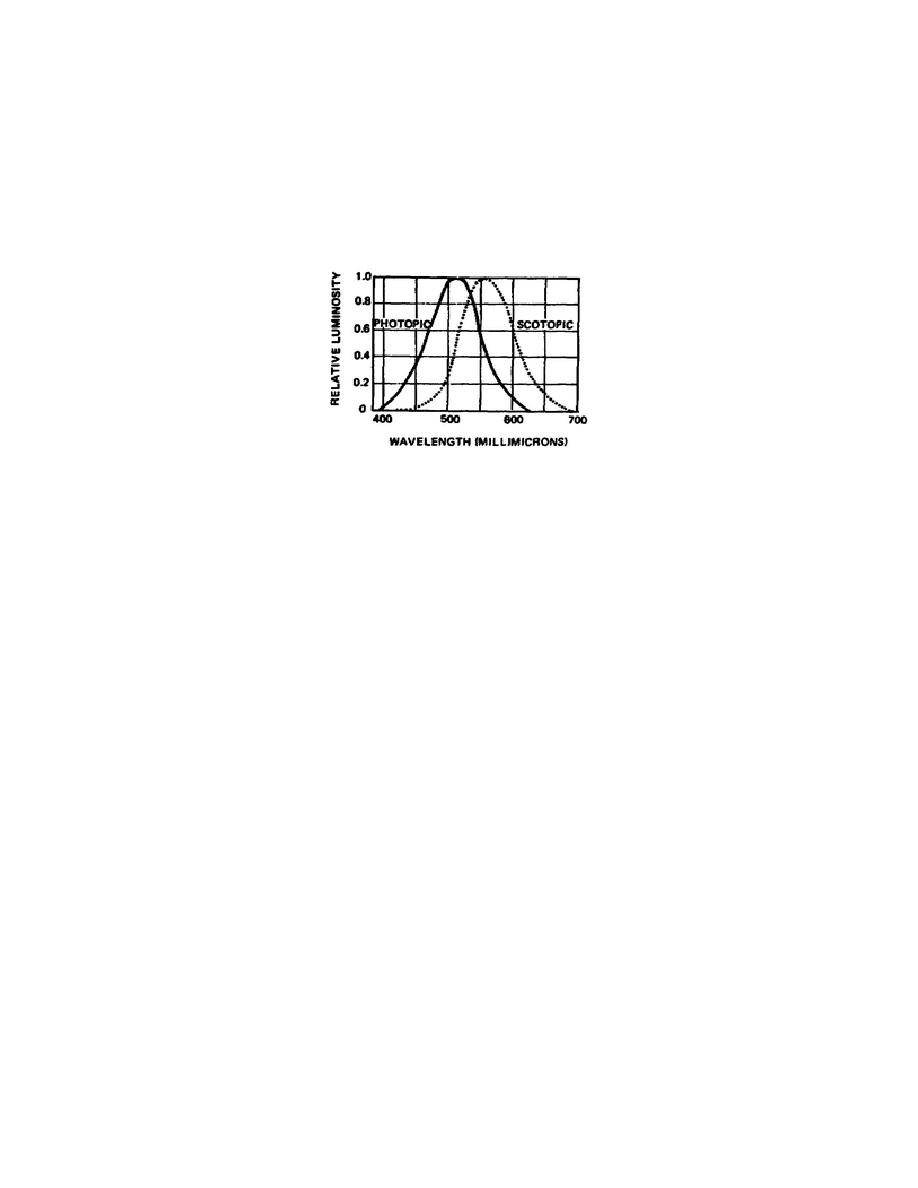
Learning Event 2:
DEFINE LUMINOSITY AND TRICHROMATIC COLOR MIXING
1.
A luminosity curve is a graphical representation of the relative
brightness to the eye of spectrum colors of a different wavelength.
As
shown in figure 2-2, the relative brightness of colors viewed under bright
light differs from the same colors viewed under dim light. The two curves
are similar in shape, but the scotopic curve is displaced about 40
millimicrons to the shorter wavelengths.
Figure 2-2.
Luminosity curves for photopic and scotopic
a. Measurements of luminosity in the photopic range are made under
conditions of bright daylight.
b. Measurements of luminosity in the scotopic range are made under
conditions of the threshold of vision.
c. Relative luminosity of colors in the region between photopic and
scotopic vision varies with intensity level.
Generally, the reds tend to
become darker in approaching scotopic levels and green and blues tend to
become relatively brighter.
2.
Trichromatic color mixing: Trichomatic color mixing is based on a
theory of color vision which states that the retina of the eye consists of
three different types of elements that are responsive to light of
wavelengths corresponding to blue, green, and red.
a. These three groups of receptors are connected separately through
nerves to the brain, where the sensation of color is derived from an
analysis of the relative stimulations from the three receptors.
b. Because of the complexity of this network of nerves and nerve
connections, it is easy to understand variations of color vision among
individuals. When the system is seriously out of balance, color blindness
results.
c. The three colors of blue, green, and red are known as additive
primaries. Actually, the three additive color primaries are not necessarily
restricted to blue, green, and red lights. Any three colors can be used as
primaries as long as not any two of the colors can be mixed to match the
third.
9



 Previous Page
Previous Page
